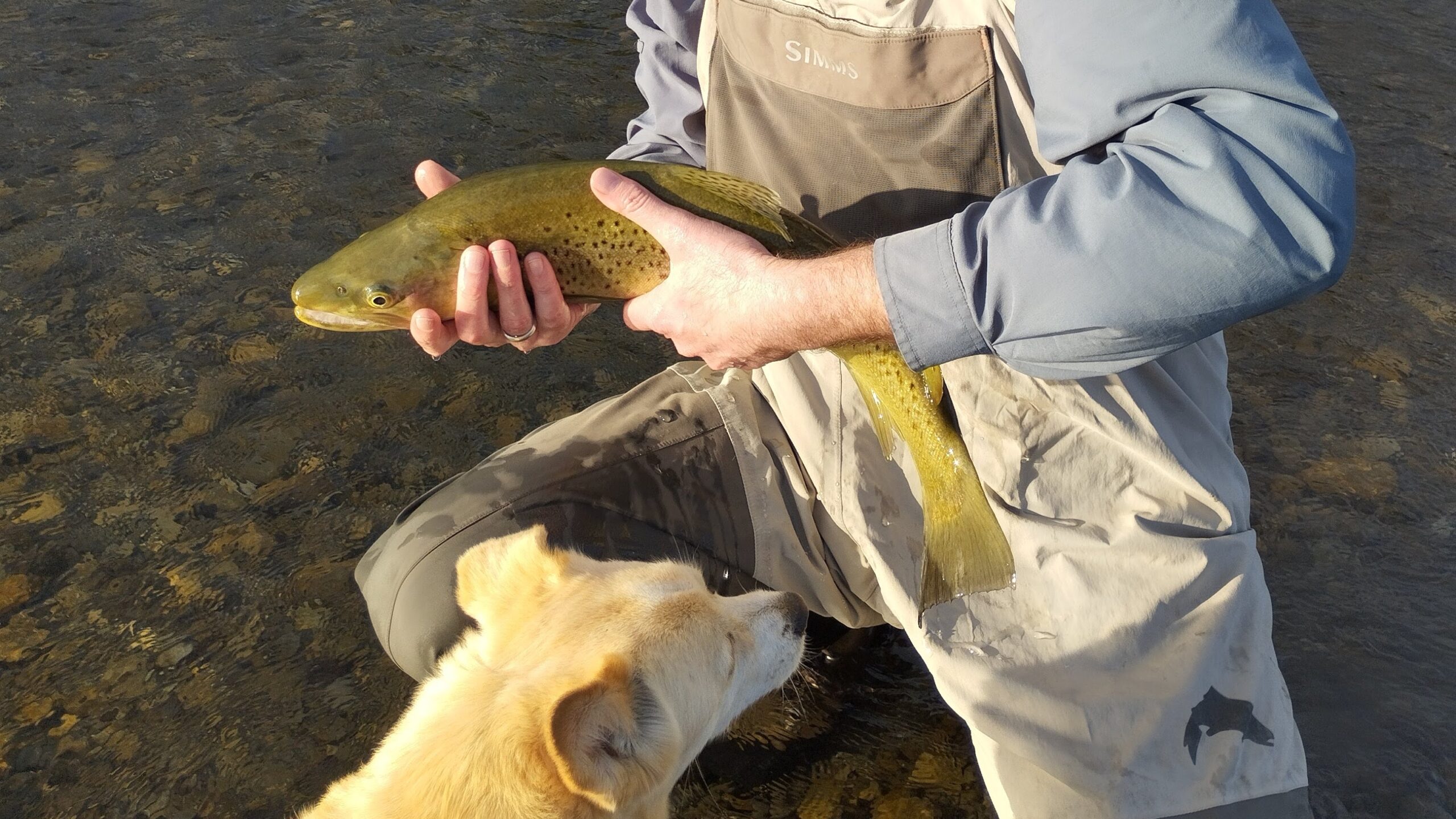August can be a challenging month for trout fishing, water temperatures are high, and being the summer vacations, popular stretches can be crowded. But there is still worthwhile trout fishing to be had.
When the temperatures of my home waters are high, I rarely fish for trout. I pre target other species or travel somewhere with cooler water.
Below I will discuss the four types of waters I fish to find trout over the late summer.
1) High Elevations: Alpine Lakes
I love the mountains in August. Alpine lakes at higher elevations typically maintain cooler water temperature even when the valleys are scorching below.
Also, the longer the hike in the better the chances of solitude and less spooky fish.
For more information I have previously written guides on how to fish alpine lakes.
How to catch brown trout in mountain lakes
How to Catch Rainbow Trout in mountain lakes
2) Heavily Forested Streams
Streams flowing through densely forested areas can offer excellent trout fishing opportunities during late summer. The shade provided by the forest canopy shields the water from direct sunlight, preventing excessive warming.
Now, in my home waters, these streams are often empty of trout, and finding a productive stream can take some effort but I have experienced excellent fishing elsewhere to know that they can be a top spot for summer fishing.
I will add that most trout will be small, I have never seen a trophy in such water .
3) Spring Creeks
Spring-fed streams provide excellent trout fishing year round. Late summer is no exception. Spring creeks are fed by cold underground springs, which contribute to a relatively stable water temperature year-round.
The cooler temperatures of spring creeks make them an attractive option when other waters might become uncomfortably warm for trout.
I find that nymphing and presenting dry flies work well on these streams due to the consistent insect activity generated by the steady water flow.
Just keep in mind that presentation is everything, due to the clarity the trout can see us just as easily as we can see them. Long casts, long leaders and assume the trout is feeding deeper than it looks.
4) Tailwaters
Tailwaters, are the outflows from dams and lakes, can offer consistent temperatures in the midst of summer heat. The water sourced from the lower depths of the dam is typically cooler, creating a more suitable environment for trout.
The plunge pool at a dam’s outflow is often the most popular place to fish. As trout often congregate in these areas to access the colder water and abundance of food.
Although such locations can become busy especially on the weekends. I normally take a walk further downstream in search of less pressured water.
Effective Lures and Techniques:
Fly Fishing:
Late summer provides a great opportunity for successful trout fishing using a variety of fly patterns, including large terrestrial insect flies, dry flies, and nymphs.
As terrestrial insects like grasshoppers, ants, and beetles become prevalent during this time of year. Here’s how I approach fly fishing with these patterns:
- Large Terrestrial Dry Flies:
- Grasshoppers, ants, and beetles are abundant in late summer and often end up in the water, they are a prime food source for trout.
- I opt for large terrestrial dry fly patterns like Chernobyl Ants, Fat Alberts, Cicadas, and Stimulators. These flies imitate the size and profile of these insects. I also keep several variations on hand, if you miss the first strike trout can become fly shy quickly on large terrestrials.
- Cast these large dry flies near the bank, try and drift them under overhanging vegetation, and around structure to attract the attention of trout looking for an easy meal on the water’s surface. With that said, exact aim is less important, trout will swim a reasonable distance to grab a big enough snack.
- Dry Fly Techniques:
- Focus on accurate casting to specific targets where trout might be holding, such as under tree canopies or along weedy edges.
- Use a gentle presentation to prevent spooking trout. Allow the fly to land softly on the water’s surface to imitate the natural behavior of terrestrial insects.
- Long leaders, and accurate casting is important. When trout are feeding from the surface keep a low profile to reduce the chance of spooking them.
- Nymph Fishing:
- Trout feed on nymphs year-round. So late summer is no exception, nymph fishing can be effective as trout continue to feed on underwater insect life.
- You can get highly technical in trying to match the aquatic life exactly, but I just prefer to use generalist patterns such as Copper Johns, Hare Ears or Pheasant tail. I usually fish a size 14, but by late summer I typically drop down to a size 18, maybe 20 in heavily pressured waters. If the trout are feeding, but not taking, go smaller.
Spin Fishing:
Small Lures and Spinners:
- Rapala lures and inline spinners are my personal lure choice during late summer. If the water is very warm, a slowly retrieved flatfish might bring results when everything else is failing.
- Smaller sizes usually work best when the water is warm, and natural colors if the streams are low and clear. Exception being if the baitfish are large, then try to match their size.
- Trout are often holding in ripples, and faster water where it is more oxygenated. In some warmer waters, I find all the trout holding behind rocks right in the rapids themselves. Find the oxygen, find the trout.
- Late august is no exception, cast near undercut banks, rocks, and structures where trout are likely to seek refuge and ambush prey. When not feeding, trout often hold deep, near the bottom where springs keep the temperature slightly lower.
- Fishing during low-light conditions, such as early morning or dusk, can increase your chances of success, as trout are more active thanks to the lower water temperatures.

